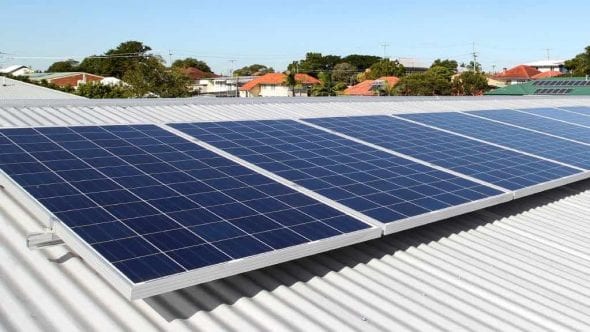Solar households in regional Queensland are set to get nearly 3c/kWh more for the renewable energy they export to the grid, after the Queensland Competition Authority recommended a rise following the jump in wholesale prices in the past year.
But the rise has a flip side – it also means a big jump in recommended retail prices, forcing the Queensland government to intervene and increase the subsidy paid to consumers in regional areas from $560 million to $770 million a year – to ensure that prices do not rise ahead of the upcoming state election.
The issue highlights the extraordinary mess that state governments find themselves in with Australia’s archaic energy markets.
Like Western Australia, Queensland pays extraordinary amounts to subsidise the cost of transporting mostly coal-fired power from centralised plants to consumers hundreds or even thousands of kilometres away.
Even though the networks who deliver the power say that it would be far cheaper – and more reliable – to have localised renewable-focused micro-grids, no progress has been made because Australia’s energy rules, locked in the last century, show no incentive for creating thinking, or cutting prices to consumers.
Which means that the state government’s have to go on subsidising that centralised power, and increasing those subsidies, as the main generators continue to push prices up by gaming the market and increasing network costs.
The Queensland Competition Authority said on Wednesday that it had raised its estimated solar tariff for regional Queensland customers to 10.1c/kWh in 2017-18, up from 7.4c/kWh in 2016-17 – a not insignificant boost that QCA attributes “mainly” to the increase in the wholesale energy prices (see Table 5) and, ironically, the lack of large scale renewable energy.
But in its final determination on retail electricity prices, also published on Wednesday, the QCA said it expected electricity bills for residential and business customers would increase by between 7-8 per cent in 2017-18, potentially adding thousands to yearly costs.
In an energy fact sheet, accompanying the determination, the QCA said the wholesale price component increase (see table below) of more than 30 per cent – which was much higher than forecast in the draft determination – was due to combination of high gas prices, the ongoing supply-demand imbalance on the NEM, and “little new renewable energy capacity entering the market in 2017, particularly in Queensland.”
The price hike provoked “an immediate intervention” by the Labor Palaszczuk government, to slash the expected increase in electricity prices for regional households and small business by more than half, to between 3.3-4.1 per cent.
“We will not tolerate a return to the massive electricity price surges inflicted on Queenslanders by Campbell Newman and the LNP,” Queensland Treasurer Curtis Pitt said in a joint ministerial statement on Thursday, which put high electricity prices down to a lack of federal leadership and a failure of the NEM.
“We’ve directed government-owned corporation Energy Queensland to reduce network charges and in doing so we are ensuring Queenslanders will benefit from stabilised electricity prices and help with cost of living pressures,” Pitt said.
But the price tag for this “cost of living initiative” will be a cool $770 million of taxpayer monies, which Pitt said would be used across the coming three years to “back consumers and lower electricity prices.”
As the QCA notes in its report, this is a “significant” subsidy – up from $561.2 million in 2016-17 – that is paid by the Queensland government “to cover the difference between notified prices and the costs that Ergon Energy Queensland Limited (Ergon Retail) actually incurs to supply regional customers.”
Effectively, it subsidises the cost of transporting fossil fuel generated power from centralised coal and gas plants down Ergon’s long, stringy network (65,000km of SWER network, alone) – a legacy of the extraordinary area it covers (97 per cent of Queensland), and its sparse population.
But it’s a fixable problem. In an interview with RenewEconomy two years ago, Ergon chief Ian McLeod conceded that, “given the technological advances available today,” the government probably wouldn’t build a complete SWER network like it did in the 1970s and 80s.
“Today,” he added, “we would look at hybrid, storage and renewable options, perhaps with some back-up.”
Indeed, Ergon is working on bringing its grid into the 21st Century, but it is slow and complicated work, particularly on a network which also has a huge uptake of residential rooftop solar to factor in.
In the meantime, some of the state’s biggest businesses – like zinc refiner Sun Metals – are getting the job done themselves, contracting their own renewable energy generation at a fraction of the cost of grid electricity prices.
Just this week, Telstra did the same, announcing it would contract a new 70MW solar farm in north Queensland to reduce and control its electricity costs.
Others, like international mining giant Glencore are threatening to up stumps, and take their Mt Isa copper operations – along with around 2,000 jobs – somewhere where it is cheaper to source power.
Which brings us back to the government subsidy.
“Large businesses and customers on transitional tariffs will also see the benefits of lower electricity prices through this change, with outcomes for these customers to be advised in the QCA’s final determination,” said state energy minister Mark Bailey on Thursday.










